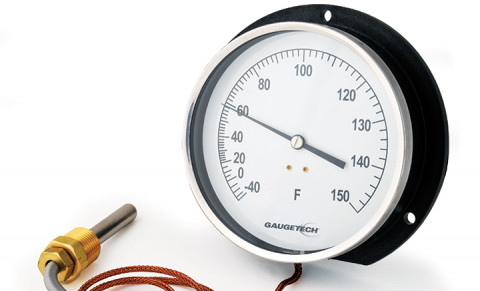Pressure Gauge Safety
Pressure media such as oxygen, acetylene, welding equipment, life support or diving equipment, boilers etc., may require pressure gauges of a construction complying with national standards or local codes. Selection of a pressure gauge for such media or applications must be carefully considered and specified when ordering.
Maintenance
Any gauge which is not working correctly should be removed from service.
Examples include gauges displaying erratic pointer motion or readings that are suspect (indications of pressure when the user believes the true pressure is 0 psi), bent or unattached pointers, cracked windows, leakage of gauge fill, case damage or cracks, signs of process media leakage through the gauge or its connection, and/or discoloration of gauge fill that impedes readability.
Sealed Case Gauges
Case Venting
Case venting must be done after installation to maintain the accuracy for sealed case pressure gauges with full scale ranges of 300 psi or below. This includes vacuum and compound ranges of 30" Hg-0-200 psi or below.

Vent Gauges Easily
You can vent gauges easily by clipping the top plug on the gauge or by lifting the top plug and resetting it. Please note: If the gauge is installed in an upright position, you may clip the top plug (no periodic venting required). If you need to mount the gauge in a non-upright position or where the gauge may be exposed to wash down conditions and other contaminants (periodic venting required), you can lift the top plug and reset it in its sealed position.
Shipment Variations
Manufacturers have determined that elevation and temperature variations during shipment and in the process applications often cause the case to expand and contract. These expansions and contractions change the pressure inside the sealed gauge case which can reduce the accuracy and pressure readings of the device. In some cases, the pointer may not return exactly to zero until the gauge is vented to match local atmospheric pressure.